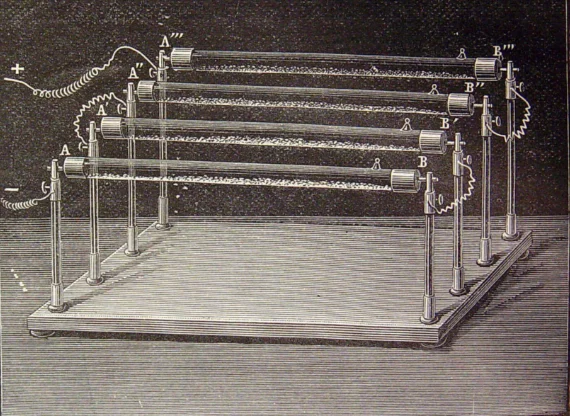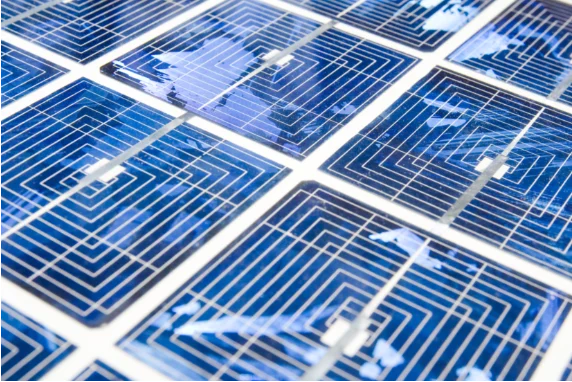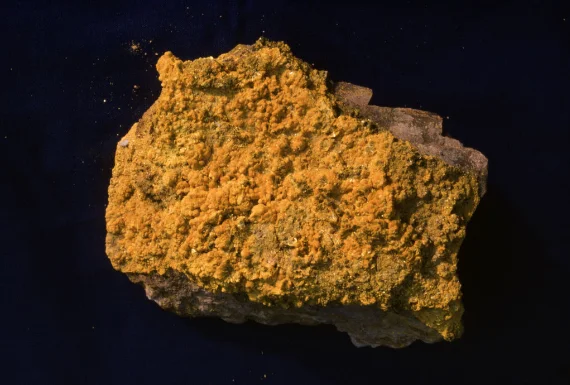The word “Becquerel” evokes the unit of radioactivity derived from the International System of Units, the becquerel (Bq). It honours the French physicist Henri Becquerel, who discovered this phenomenon and shared the 1903 Nobel Prize for Physics with fellow pioneers Marie Skłodowska-Curie and her husband Pierre. But there is much more to the Becquerel surname: the unusual case of a scientific dynasty spanning almost two centuries and four generations, whose founder earned a place among the 72 names engraved on the frieze of the Eiffel Tower.

Antoine César Becquerel (d. 18 January 1878) was born on 7 March 1788, the son of the mayor of Châtillon-sur-Loing and a member of a family of high-ranking civil servants. He studied at the École Polytechnique in Paris, a military institution, from which he entered the corps of engineers, where he quickly found a posting in the Napoleonic invasion of Spain that began in 1808. For two and a half years, he took part in several battles and returned to France in 1812, in poor health, with the rank of captain and the decoration of Knight of the Legion of Honour. With the fall of the Napoleonic Empire, he resigned from the army and took up what was to become his profession, science.
The photovoltaic effect
From the National Museum of Natural History in Paris, Becquerel became interested in the phenomenon of electricity, which was very much in vogue at the time. In this field, he refuted the idea of Alessandro Volta that the electric fluid in a battery was the result of contact between metals with intrinsic potentials. Becquerel, like others, argued that the electric fluid was due to an electrochemical reaction, and from this he proposed the idea of a constant current battery. Among his contributions, he used electrolysis to separate minerals and was also interested in biochemistry, thermoelectricity and meteorology.
In 1839, together with the youngest of his three sons, Alexandre-Edmond (24 March 1820 – 11 May 1891), he discovered a phenomenon that was to become of great importance: the photovoltaic effect, or the generation of an electric current in an electrode exposed to light. This work led to the world’s first photovoltaic cell—the forerunner of solar panels—the breakthrough for which Edmond is most remembered and which he achieved at the age of just 19. Another member of the dynasty, Edmond’s older brother Louis Alfred (3 June 1814 – 10 March 1862), a physician and author of several clinical treatises, is often overlooked.

Edmond had another passion, photography, then a new technology. In the same year that the photovoltaic cell was born, another Frenchman, Louis Daguerre, presented his daguerreotype, the first photographic system that actually worked. The following year, Edmond Becquerel experimented with a development process using coloured lights, which was unsuccessful, but which led him to invent a colour photography process in 1848, albeit with very long exposures and with tones that only lasted if kept in total darkness.
The phosphorescence of uranium and radioactivity
Edmond’s interest in light also led him to study, among other phenomena, the strange phosphorescence of certain materials, i.e., their ability to continue emitting light after being exposed to it. Among the compounds with this property, for the measurement of which he invented the phosphoroscope, he included certain uranium salts. His eldest son, Antoine Henri (15 December 1852 – 25 August 1908), continued this line of research. As the third generation of prominent physicists, he inherited the chair of physics at the Museum of Natural History on his father’s death.

Henri Becquerel and radioactivity are often cited as an example of serendipity or accidental discovery. But as with Fleming and penicillin, this does not do justice to the merit of his systematic research. In early 1896, Becquerel learned of a sensational discovery by the German mechanical engineer and physicist Wilhelm Conrad Röntgen: a new type of ray, called X-rays, which could pass through cardboard, fluoresce on a support and expose a photographic plate through flesh, leaving the outline of bones.
Given Henri’s background, he thought that the phosphorescence of uranium might be related to the emission of X-rays stimulated by light. He began experimenting with uranium and photographic plates and was helped by an unexpected ally: clouds. When overcast skies prevented the uranium from being well exposed to the sun, he expected to find only a faint image on the plates, but development showed as much exposure as in his earlier experiments. He repeated this in the dark, confirming that sunlight was not necessary; uranium emitted a spontaneous radiation different from phosphorescence and Röntgen’s X-rays. His later studies would lead him to propose that uranium’s beta radiation, so named by Ernest Rutherford, was composed of electrons.

Like the Curies, who would confirm the radioactivity of thorium, polonium and radium, Henri suffered radiation burns, and it is said that a test tube of radium he left in his waistcoat pocket helped inspire the development of radiotherapy. However, it seems unclear whether his death at the age of 55 was due to the effects of radiation. But before he died, he left an heir, his only son: Jean Antoine Edmond Marie (5 February 1878 – 4 July 1953). Jean also held the chair of physics at the Museum of Natural History, where he worked on the optical and magnetic properties of crystals and taught the new physics of relativity and quantum physics. He was married but left no children, ending one of the most brilliant dynasties in the history of science.
Comments on this publication